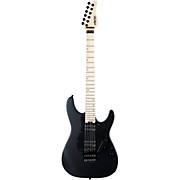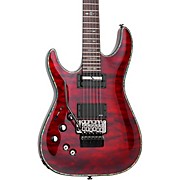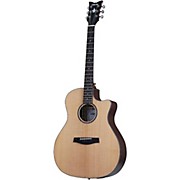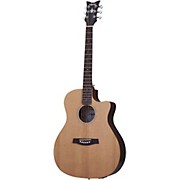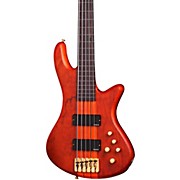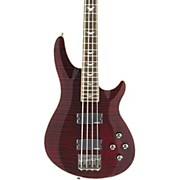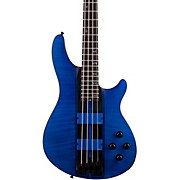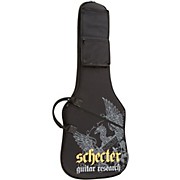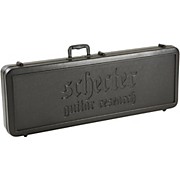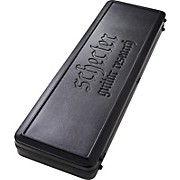
product types:
- electric guitars
- acoustic guitars
- bass guitars
- cases
Information:
Origins
In 1976, David Schecter opened Schecter Guitar Research, a repair shop in Van Nuys, California. The modest repair shop manufactured replacement guitar necks and bodies, complete pickup assemblies, bridges, pickguards, tuners, knobs, potentiometers, and miscellaneous other guitar parts. Eventually, Schecter Guitar Research offered every part needed to build a complete guitar. It supplied parts to big guitar manufacturers such as Fender and Gibson and to custom repair shops that were building complete guitars out of Schecter parts. By the late 1970s Schecter offered more than 400 guitar parts, but did not offer any finished instruments.
In 1979, Schecter offered, for the first time, its own fully-assembled electric guitars. These guitars were custom shop models based on Fender designs. They were considered to be very high quality and very expensive, and were sold only by twenty retailers across the United States.
In September 1979, Alan Rogan, then guitar tech for Pete Townshend of The Who, picked up a custom shop Schecter guitar. It was a Fender Telecaster-style guitar with two humbucking pickups and a Gibson Les Paul-style pickup selector. Townshend immediately fell in love with it, and it became his main stage guitar. He later had several similar instruments built from Schecter parts and assembled by Schecter and U.K.-based guitar maker Roger Giffin. Townshend last used a Schecter on stage at The Who's 1988 appearance at the BPI Awards Show, although Simon Townshend, Pete's brother and part of The Who's touring band since 2002, often plays one of these guitars during Who concerts.
In 1980, Mark Knopfler of Dire Straits used Schecter Stratocaster-style guitars to record the band's third album, Making Movies. Mark Knopfler owned many Schecter guitars, including one finished in Candy Apple Red with a 21-fret maple neck/fretboard without dot markers, white pickguard, gold-plated hardware, master volume and tone controls. This instrument was his main guitar for live and studio use until 1987. In 2004 one of his Schecters, a Stratocaster-style guitar with a tobacco sunburst finish, was sold at an auction for over $50,000, the highest amount ever paid for a Schecter guitar.
Move to Texas
By 1983, Schecter had reached its custom shop production limit and could no longer meet demand. That year, the company was purchased by a group of Texas investors who wanted to build upon Schecter's reputation for quality. The investors moved the company to Dallas, Texas, where they produced sub-par quality guitars using both imported parts and Schecter parts under the Schecter name for less than five years.
At the 1984 winter NAMM show, Schecter introduced twelve new guitars and basses, all based on Fender designs. The most popular of these guitars was a Telecaster-style guitar similar to those that Pete Townshend played. Although Townshend never endorsed this model, it was known unofficially as the "Pete Townshend model." Eventually, the Telecaster-style guitar became known as the Saturn, and the company's Stratocaster-style guitar became known as the Scorcher.
During this period, Schecter managed to sign one notable endorsee, Yngwie Malmsteen. Schecter built several custom guitars for Yngwie Malmsteen that featured scalloped necks and reverse headstocks
Sold to Hisatake Shibuya in 1987
In 1987, the Texas investors sold the company to Hisatake Shibuya, a Japanese entrepreneur who also owned the Musicians Institute in Hollywood and ESP Guitars (To this day, Schecter Guitar Research and ESP Guitars have remained separate entities).Shibuya moved the company back to California and returned Schecter to its custom shop roots, devoting all its efforts to manufacturing high-end, expensive custom instruments.
Schecter guitars were once again only available from a few retailers, one of them being Sunset Custom Guitars located in Hollywood, which Hisatake Shibuya also owned. Sunset Custom Guitars happened to be the place where Michael Ciravolo, the future president of Schecter Guitar Research, worked.
In 1995, Schecter introduced the highly-sought-after S Series guitars and basses, which were Fender-style instruments. In 1996, Hisatake Shibuya asked Michael Ciravolo to become Schecter's president and run the company. Michael Ciravolo, an experienced musician, brought to the company many well-known musicians as endorsees. These included Robert DeLeo of Stone Temple Pilots, and Jay Noel Yuenger and Sean Yseult of White Zombie.
Michael Ciravolo never really liked Fender designs, so he sought to distance the company from its past Fender-style models. Toward that end, he added the Avenger, Hellcat, and Tempest models to the Schecter catalog. He also wanted to reach out to a new generation of musicians who were ignored by most major guitar manufacturers. Yet, at this point, the company was only producing expensive, custom shop models. (Schecter's maximum output was forty guitars a month.) So, to realize his vision, Ciravolo began searching for a factory that could mass-produce Schecter guitars while maintaining high quality standards.
In 1997, Michael Ciravolo met with several Asian guitar manufacturers at the Tokyo Music Festival and subsequently decided on a factory located in Incheon, South Korea. (Though not known for sure, this location could be the electric guitar factory for Cort.) Schecter's guitars would be built in the South Korea factory, after which they would be shipped to the U.S. to be set up in a Schecter shop. At the 1998 summer NAMM show, Schecter introduced the Diamond Series, which included six affordably priced non-custom guitars.
In 1999, Schecter added the seven string A-7 Avenger guitar to the Diamond Series. It also introduced the C-1, which was debuted by Jerry Horton in Papa Roach's "Last Resort" music video. Today, the company mass-produces affordable, non-custom guitars under the Diamond Series and continues to build expensive, handmade, custom models.
